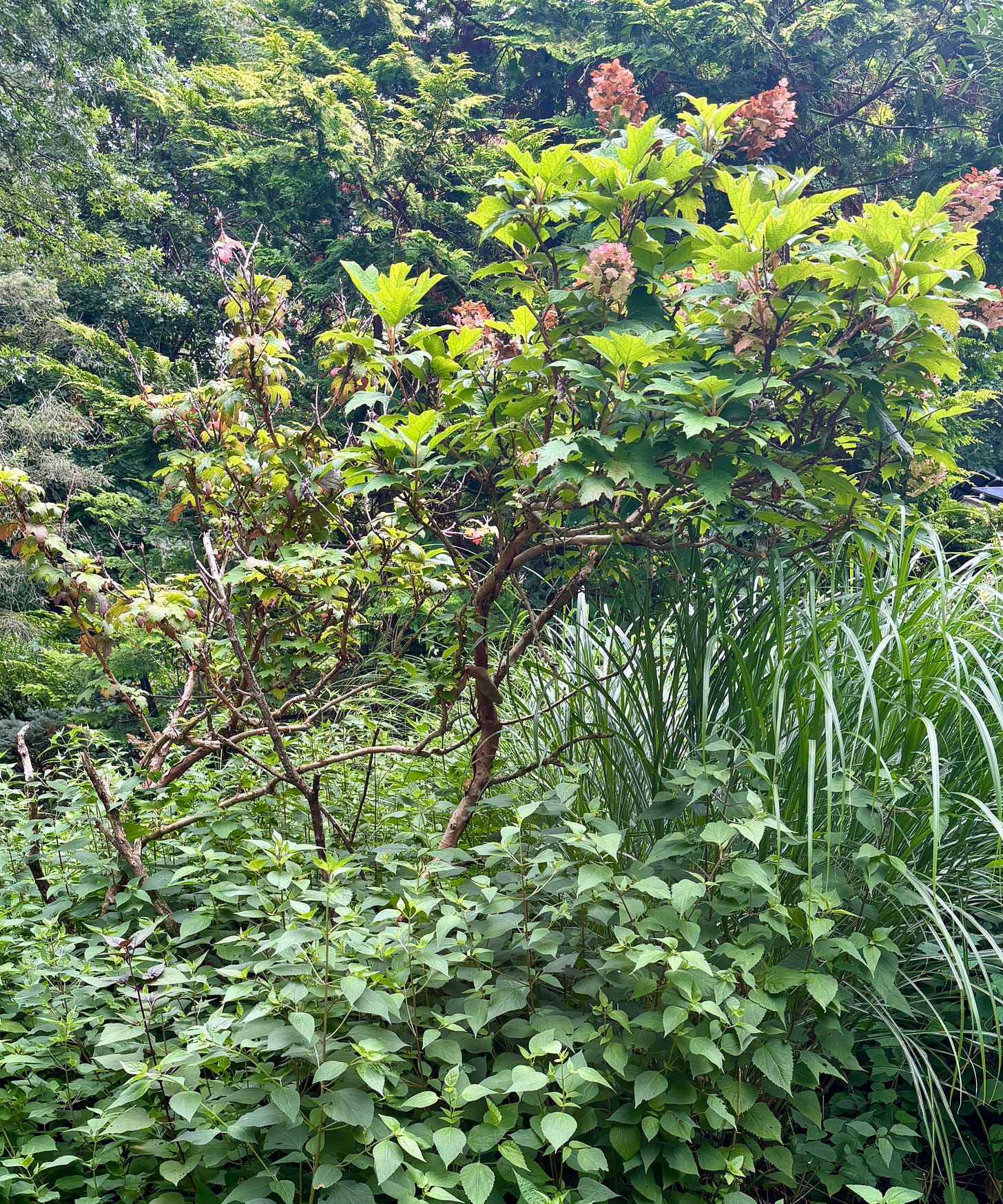A squirrel’s nest on our roof.
Raccoons in our chimney.
Bats in our bedroom.
Ants in our kitchen.
Snakeroot Plants in our garden.
Of course, I respect nature: Shout out to bats for eating bugs, even lantern flies! To squirrels & raccoons for serving as seed dispensers! To ants for creating air pockets which generate water circulation! To Snakeroot for being a late-season nector source!
But do we have to let squirrels, raccoons, bats, ants, and Snakeroot do whatever they want?
My writer friend Elizabeth Jannuzzi reflects on White Snakeroot specifically in her recent substack called White Snakeroot & Perception: “Currently, our backyard is covered in White Snakeroot, a 3-5 foot tall perennial that blooms from July to October with fluffy clumps of white flowers. While these plants aren’t ugly, what bums my head is their pervasiveness, crowding out any other plant that might grow.”
Jannuzzi reconsiders her views on White Snakeroot when she discovers the same plant featured in a formal Italianate garden as a special plant specimen with its own plaque: “In my skewed thinking, a plant that grows so easily in my backyard cannot be considered a beautiful native plant that should be nurtured for its benefit to bees, moths, and butterflies. No, if it’s in my yard and happily spreading, it must be an unwanted weed. …to readjust my negative perception, I needed to be shown a different reality of White Snakeroot, one that involved a plaque.”
I agree with Jannuzzi’s argument.
Yet when I see thick clumps of White Snakeroot crowding out so many other plants, I feel the need to make a counterpoint. (She consented to my request about writing this counterpoint btw).
I don’t want squirrels, raccoons, bats, and ants moving into our house. And I don’t want Snakeroot overrunning our whole garden, killing other valulable and beautiful plant species. I can’t tolerate a complete laissez-faire attitude, even though I recognize the envionnmental benefits of each.
What to do?
We captured and released the bats and squirrels. (The raccoon died in the chimney but it wasn’t our fault; that’s another story). The ants inside our house were exterminated, but we left them alone outside.
And the Snakeroot?
I pulled out many mounds in parts of our garden, so lavendar, coneflowers, hydrangea, and lilies can grow. But I left some Snakeroot to do its own thing, to join the section we call “The Chaos Garden.”
My conclusion on Snakeroot?
It’s both: a plant valuable to the ecosystem, and an extremely aggressive species crowding out other plants.
As Jannuzzi implied, to accept that some plants we call weeds are in fact beneficial and attractive, we need to engage in cognitive reframing. This involves challenging our views on societal norms.
But I think it takes one more step beyond renaming a nuisance plant a valuable member of the ecosysterm. Going beyond “non-binary thinking” means rejecting the binary model of either/or, good/bad. Instead, a more pluralistic persepective involves the word and. Such a view may seem radical in contemporary times where people are so polarized.
Arguably, the Snakeroot dilemna is a metaphor for a more inclusive world, where we purposefully create spaces for all types without allowing one to dominate and exclude.
What in nature have you encountered that has challenged your beliefs? What lessons have you learned from nature?





Counter Counter Point - White Snake Root is NOT an invasive species. It's native to NJ. An invasive species is defined as a non-native organism that spreads aggressively in a new environment, causing harm to the native ecosystem, economy, or human health. Snake Root may be invading your yard! But it's not an "invasive species."
We are cursed (blessed?) with invasive wild yam on our farm. There is no way to eradicate it except to burn the whole place down. And even then, the heart-shaped vine with its little tiny “potato seeds” would probably come back even stronger. Wild yam is grown and cultivated in Mexico and other places for its hormone-balancing qualities. Sometimes I think I just need to embrace the vine and start a natural progesterone business. 🤪